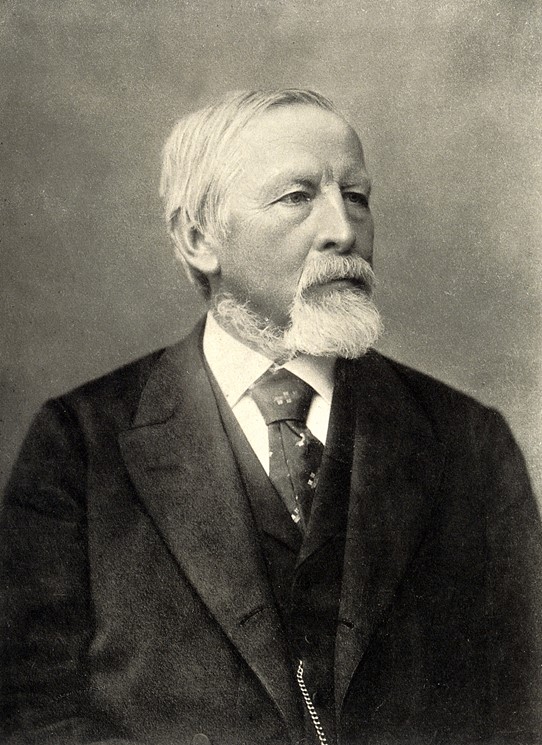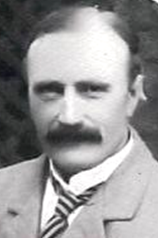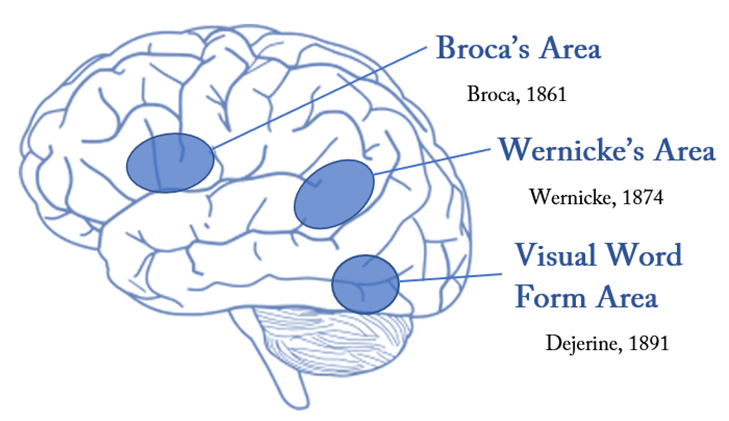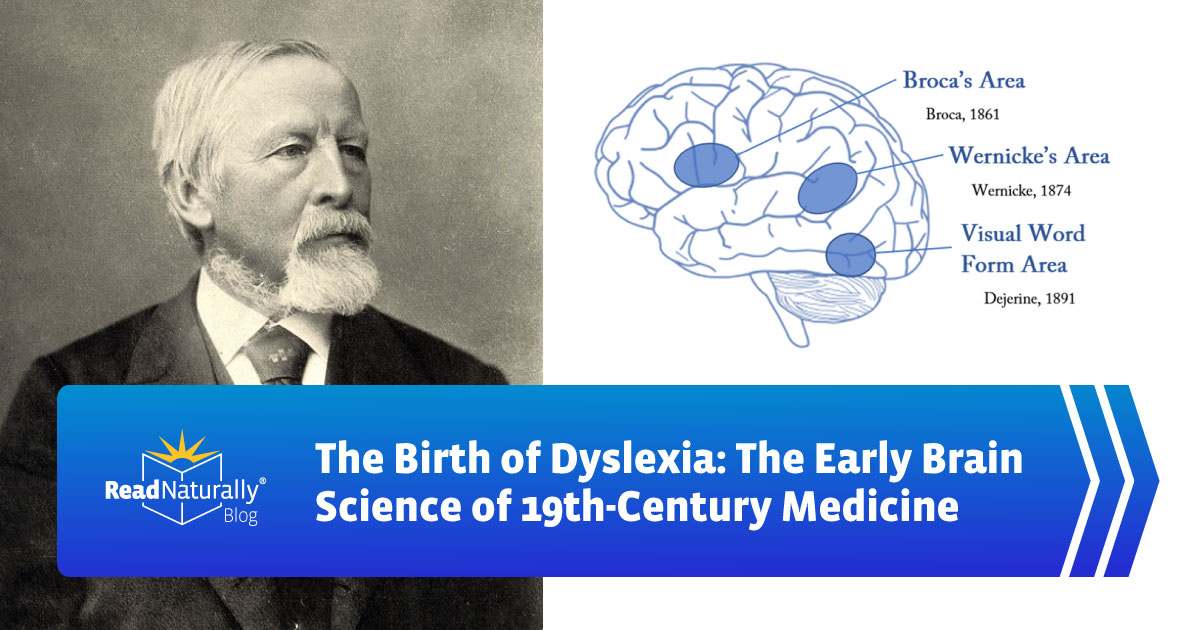In recognition of Dyslexia Awareness Month, Read Naturally aims to build knowledge around the learning disorder of dyslexia. This article summarizes the remarkable discovery of the language disorder over 140 years ago.
The Acquisition of “Word Blindness”
A woman, forty-five years of age, [suffered a stroke] while in the enjoyment of the most blooming health. . . . Two months after the attack she discovered that she could no longer read printing and writing. She saw the text, distinguished the forms of the letters, and could even copy the text, but was incapable of translating the words into spoken words and thoughts. (Van den Abeele, as cited in Kussmaul, 1877)

The first identification of the condition known today as dyslexia is attributed to German physician Adolph Kussmaul in the 1870s. In his medical treatise on “disturbances of speech,” written in 1877, Kussmaul comprehensively summarized dozens of language impairments. Some of the afflictions were already well understood, whereas others were recent discoveries needing study. The 35 chapters of the treatise are liberally embellished with physicians’ observations from medical cases like the description of the woman above. The cases describe the experiences of patients who suffered brain damage from causes like stroke, traumatic brain injury, dementia, or infection.
Kussmaul invented the term word blindness to describe those with normal vision and intellect who lose the ability to read words while maintaining the ability to speak normally (and in some cases even to write). Today, these individuals would be diagnosed with a form of acquired dyslexia, or dyslexia that develops as the result of brain injury.
Six years later, a fellow German, ophthalmologist Rudolf Berlin, coined the term dyslexia (1883). Derived from the Greek dys- (meaning “difficult”) and -lexia (meaning “words”), dyslexia literally means “difficulty with words.” While word blindness was the label used throughout the first half of the 20th century, it eventually gave way to our use of Berlin’s term dyslexia today.
Word Blindness From Birth
Percy…, aged 14—…[A] bright and intelligent boy, quick at games, and in no way inferior to others of his age. His great difficulty has been—and is now—his inability to learn to read. This inability is so remarkable, and so pronounced, that I have no doubt it is due to some congenital defect. (Pringle Morgan, 1896)

Published in the November 1896 issue of the British Medical Journal, William Pringle Morgan’s article, “A Case of Congenital Word Blindness,” describes Percy, a 14-year-old boy who curiously struggled only with learning to read. The published observations of children like Percy by neuroscientists, ophthalmologists, and physicians from this time are among the earliest accounts of what is today known as developmental dyslexia, a genetic, brain-based reading disability that impairs learning to read. General references to “dyslexia” nearly always refer to developmental dyslexia.
Pringle Morgan reflected on the similarity of Percy’s case to the word blindness (that is, acquired dyslexia) reported by Kussmaul:
It is unique, so far as I know, in that it follows upon no injury or illness, but is evidently congenital, and due most probably to defective development of that region of the brain, disease of which in adults produces practically the same symptoms…. (1896, p. 1378)
While physicians continued to study with fascination the curious cases of acquired dyslexia, Pringle Morgan’s article represents the start of a new focus for many scientists on developmental dyslexia. In the early part of the 20th century, James Hinshelwood in Great Britain and Samuel Orton in the United States would explore dyslexia in children with great enthusiasm, paving the way for the advocacy, research, and supports that arose in the 60s and 70s and still continue today.
The Remarkable Deductive Power of Observation and Autopsy
Study of the brain in the 19th century was a slow, two-step process. First, physicians chronicled the details of medical cases over time, sometimes following patients for several years. Then, upon those patients’ deaths, careful autopsies were conducted. Victorian-era scientists were able to map the locations of specific brain functions by combining details of the symptoms in their cases with the locations of brain lesions—areas destroyed by disease, loss of blood supply, or injury—identified by postmortem autopsy. This was especially true for cases of acquired dyslexia and the other language disorders chronicled in Kussmaul’s 35 chapters. The medical community shared their cases with one another in lectures and journals, allowing the field to build upon their collective experience. In this way, three important areas of the reading network were identified before the turn of the century:
- French physician Pierre Paul Broca was presented with two patients, Leborgne and Lelong, both of whom had lost the ability to speak (a condition known as aphasia) and were able to utter only one and five words, respectively. Upon their deaths, autopsies revealed that both patients had brain lesions in the same place. In 1861, Broca lectured and wrote about this discovery, the first specialized area of language processing found in the anatomy of the human brain. This area is still known today as Broca’s area.
- In a similar vein, German physician Carl Wernicke published a book in 1874 in which he discussed other patients suffering from aphasia. Unlike Broca’s cases, Wernicke’s patients could still perfectly articulate words; however, they could neither generate nor understand sensible language. As with Broca, Wernicke discovered that his patients all had suffered damage to roughly the same area of the brain. This area, today known as Wernicke’s area, is part of the language network and is essential for word and sentence comprehension.
- In 1892, French neurologist Joseph Jules Dejerine published the findings of the case of “Mr. C,” whom Dejerine first met in 1887. Mr. C., a retired salesman, was reading in his chair one day when he suddenly lost the ability to read the words. Later, after his death in 1892, an autopsy revealed that Mr. C. had suffered a stroke that impaired an area Dejerine identified as a “visual center for letters.” Today this area is known as the Visual Word Form Area, or the “brain’s letterbox.” Dejerine’s discovery was one of the first to identify a specialized location in the brain used for reading.

The remarkable identification of these three areas was important not only for understanding language processing but also in providing evidence of the theory of specialized areas of the brain for specific tasks. While each of the areas discovered in the examples above was thought at the time of discovery to serve a single function, neurologists have since shown that other parts of the language network contribute to those functions and that those areas, in turn, contribute to additional processes themselves.
While inefficient compared to modern technologies that allow images of brain functions in real time, early scientists like Kussmaul, Dejerine, and their contemporaries were able to map and develop remarkable understanding of language processing in the brain. While not all their early theories proved correct, many of their initial insights into the fundamental characteristics and causes of dyslexia and other language disorders have been confirmed in the modern era.
References
"Adolph Kussmaul. Photogravure.” by Wellcome Images, a website operated by Wellcome Trust, a global charitable foundation based in the United Kingdom, is licensed under CC by 4.0.
Berlin, R. (1883). Über Dyslexie. [About dyslexia.]. Medicinisches Correspondenz-Blatt des Württembergischen ärztlichen Landesvereins, 53, 209–10.
Broca P. (1861a). Nouvelle observation d’aphémie produite par une lésion de la moitié postérieure des deuxième et troisième circonvolutions frontales. [New observation of aphemia produced by a lesion of the posterior half of the second and third frontal circumvolutions.]. Bulletins de la Société anatomique de Paris, 2 (6), 398–407.
Broca P. (1861b). Perte de la parole, ramollissement chronique et destruction partielle du lobe antérieur gauche du cerveau. [Loss of speech, chronic softening and partial destruction of the left anterior lobe of the brain.]. Bulletins de la Société d’Anthropologie de Paris, 1 (2), 235–238.
Dejerine, J. (1891). Sur un cas de cécité verbale avec agraphie, suivi d’autopsie. [On a case of word blindness with agraphia, followed by autopsy.]. Séances et mémoires de la Société de Biologie, 9 (3), 197–201.
Dejerine, J. (1892). Contribution à l’étude anatomo-pathologique et clinique des différentes variétés de cécité verbale. [Contribution to the anatomical-pathological and clinical study of the different variations of word blindness.]. Séances et mémoires de la Société de Biologie, 9 (4), 61–90.
“Dr. William Pringle Morgan” [Photograph] Adapted from https://dyslexiahistory.web.ox.ac.uk/brief-history-dyslexia
Hinshelwood, J. (1917). Congenital Word Blindness. H. K. Lewis.
Kussmaul, A. (1877/1977). Disturbances of Speech, Chapter 27: Word-deafness.—Word-blindness.—Derangements of the impressive or perceptive speech-track in general.—Alexia and kindred derangements in the comprehension of the symbols of expression.—Apraxia and aphasia. In Dr. H. von Ziemssen (Ed.), Cyclopedia of the Practice of Medicine (Vol. 14, pp. 770–778, G. B. Shattuck, Trans.). William Wood and Company. (Original work published in German, 1877.) https://archive.org/details/63550630RX10.nlm.nih.gov/page/n791/mode/2up
Pringle Morgan, W. (1896). A case of congenital word blindness. British Medical Journal, 2 (1871), 1378. http://doi.org/10.1136/bmj.2.1871.1378
Wernicke, C. (1874). Der aphasische Symptomencomplex. [The aphasic symptom complex.]. Cohn & Weigert.

 Share your student’s success story—nominate him or her for our Star of the Month award. Win a Barnes & Noble gift card for the student and a Read Naturally gift certificate for your class!
Share your student’s success story—nominate him or her for our Star of the Month award. Win a Barnes & Noble gift card for the student and a Read Naturally gift certificate for your class!
Post a New Comment